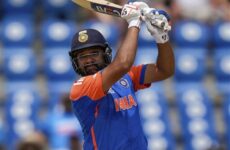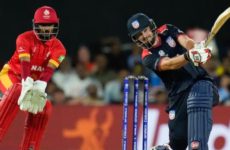Singapore: A week ago, cricket was considered one of the safest games in the world, a sport that anyone can play without any real fear for their safety.
The horrific death of Australian batsman Phillip Hughes, who died after being hit in the head by a ball, has shattered that notion forever.
Suddenly the sport is under the spotlight and preparing to conduct a full review of its safety procedures to ensure there is no repeat.
But if history, and what has happened in other sports is any guide, wholesale changes are unlikely to happen quickly.
The two key elements that will come under most scrutiny are helmets and bouncers, the deliveries that cause the most serious injuries.
The sport has already placed restrictions on the number of bouncers a bowler can deliver and even in the immediate aftermath of Hughes` death, there was universal support to keep the existing rules, considered a vital part of the game.
The main focus will be on helmets. It is currently not mandatory for batsmen to wear helmets but that rule will now be reviewed, as will the design.
Hughes was wearing a protective cap but the ball slipped through a tiny gap between his shoulder and the base of his helmet.
Other sports use larger helmets and cricketers wore them as well years ago but opted for a smaller version because they need to retain a lot of mobility, so they can turn their heads quickly enough to avoid being hit and play the shots required to score runs.
It is a fine balancing act and even the helmet manufacturers say there is still no guarantee that a newer style helmet would be completely safe.
Although test cricket dates back to the 1870s, players only started wearing helmets in the late 1970s and the initial response was mixed.
The former Australian captain Graham Yallop was booed when he wore a helmet in the West Indies in 1978 while Tony Greig was lampooned for wearing one that looked like a motorcycle helmet.
But as time past, and lighter, more aerodynamic styles were made, they became more commonplace, reducing the number of serious injuries.
Cricket is not the first sport to investigate helmets after the death of player.
In 1920, Cleveland shortstop Ray Chapman was killed when he was hit in the head by a ball thrown from New York Yankees pitcher Carl Mays, the only death in Major League Baseball.
His death led to calls for batter helmets but they were not made mandatory until the 1950s.
Bill Masterton died from head injuries he suffered in a National Hockey League game in 1968, sparking a long-running debate over helmets, which were finally made mandatory 11 seasons later.




 Driving Naari Programme launched in Chandigarh
Driving Naari Programme launched in Chandigarh






























